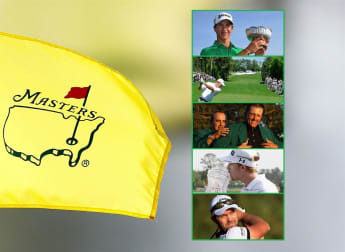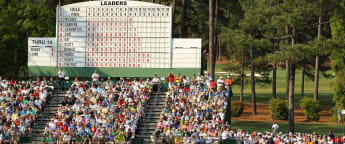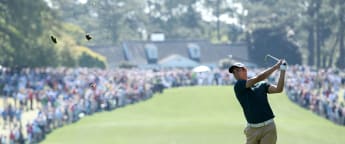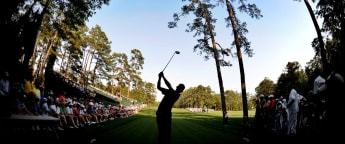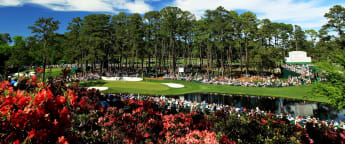Ahead of the start of the 2012 Masters Tournament on Thursday, europeantour.com looks into the tale behind the title of a golfing treble of almost artistic majesty.
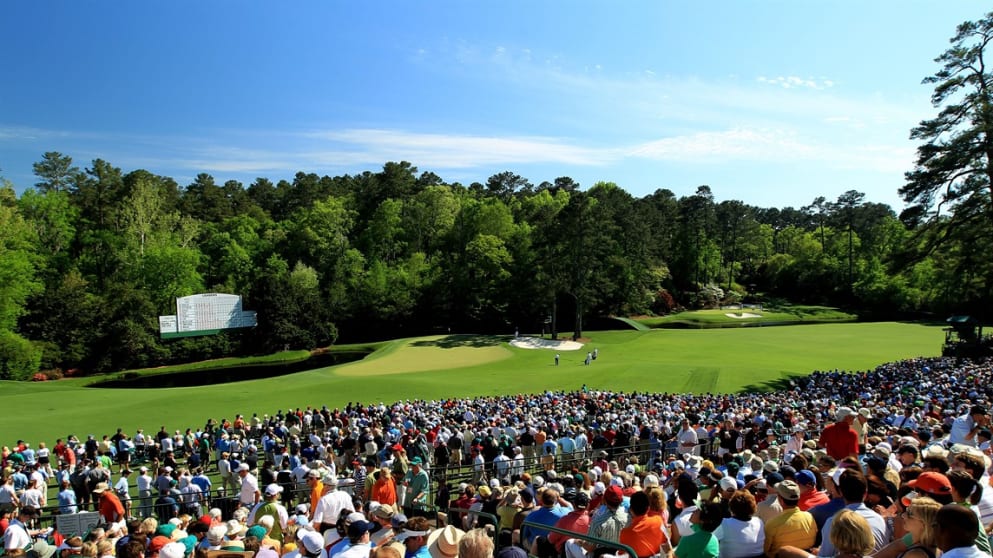
There are few more impressive and imposing a run of holes in the world of golf than the trio of Alister MacKenzie masterpieces at Augusta National Golf Club popularly known as ‘Amen Corner’.
The name refers to hole numbers 11, 12 and 13 at Augusta National, home of the Masters Tournament. The evocative title for the holes also known as also known as White Dogwood, Golden Bell and Azalea was first coined more than 50 years ago by Herbert Warren Wind in the April 21, 1958 edition of Sports Illustrated.
Wind wrote that the spectacular corner was composed of the second half of the 11th hole, the infamous short 12th, and the first half of the 13th hole. The renowned American sports writer was searching for an appropriate name for the location where some typically dramatic Masters action had occurred the previous year.
On the Saturday evening of the 1958 tournament heavy rains had soaked the course, meaning for Sunday’s final round a local rule was adopted allowing a player whose ball was embedded to lift and drop it without penalty.
On reaching the daunting par three 12th that day, American legend Arnold Palmer hit his tee shot over the back of the green, leaving his ball plugged in the steep and sodden bank behind the putting surface.
Being uncertain about the applicability of the local rule, the official on the hole and Palmer agreed that the ball should be played as it lay and that Palmer could play a second ball which he dropped.
Palmer, widely known by the nickname befitting of his royal status in global golf - ‘The King’, went on to make a double bogey five with his original ball and a par with the second and continued with his round as the committee was asked to decide if the local rule was applicable and if so, which score would count.
At the par five 13th, still unaware of what his score was at the 12th, Palmer holed a crucial 18 foot putt for eagle, and it wasn’t until the 15th hole that Palmer was told his drop at 12 was legal and that his score of par would stand.
He would go on to complete his first victory in a Major Championship by a one shot margin over Doug Ford and Fred Hawkins, the first of four for Palmer at Augusta, and the first of seven Major titles over the course of a stellar career.
That fateful day at Augusta, Palmer’s prayers at Amen Corner were seemingly well received.
Wind later revealed the inspiration behind the illustrious moniker as the title of a jazz record he had heard many years before, ‘Shoutin’ in that Amen Corner’, and a desire to pen a name similar to those applied to other sport’s action hot-spots, such as baseball's ‘hot-corner’ or football's ‘coffin-corner’.
Debatably most fearsome of the testing threesome, though, is the 155-yard par three 12th, and any player stepping on to the 13th tee having made par at the previous green will surely be whispering his own thanks skywards as he departs Augusta’s Amen Corner.
How they play…
Hole 11 – White Dogwood – Par four – 505 yards
 |
At this hole begins Amen Corner, and the infamous swirling wind is often a factor. The tee shot plays downhill and left to right so a fade is required to reach the fairway. A pond guards the green to the left and a bunker is strategically placed right of centre. This hole is frequently remembered for Larry Mize’s extraordinary chip shot that won the Masters Tournament in a play-off with Greg Norman in 1987. Although the tenth hole is historically ranked as the hardest on the course, the 11th has proved most testing in recent years, largely due to its added length which brings the pond more into play with a longer approach shot.
1934 length: 400 yards
Averages
Historical Average: 4.29
Historical Rank: 3
Hole 12 – Golden Bell – Par three – 155 yards
 |
Possibly the most famous of all the fine holes at Augusta National, this is the shortest par three on the course yet probably the most feared. With swirling winds always a factor, club selection can vary from six iron to nine iron. Rae’s Creek guards the front of the green while three bunkers – one in front and two at the rear plus numerous azalea plants – make landing your tee shot on the putting surface a necessity, otherwise a nightmarishly fast and thorny chip down the green could be the penalty.
1934 length: 150 yards
Averages
Historical Average: 3.30
Historical Rank: 2
Hole 13 – Azalea – Par five – 510 yards
 |
For the first time at Amen Corner, players will allow themselves to contemplate birdie or better on reaching the 13th tee, as an accurate tee shot played with a slight draw to the centre of the fairway will allow a player to go for the green in two shots if desired. A tributary of Rae’s Creek winds in front of the green, while four bunkers lurk at the rear. As becomes the hole’s name, from tee to green there are approximately 1,600 azaleas.
1934 length: 480 yards
Averages
Historical Average: 4.80
Historical Rank: 17
